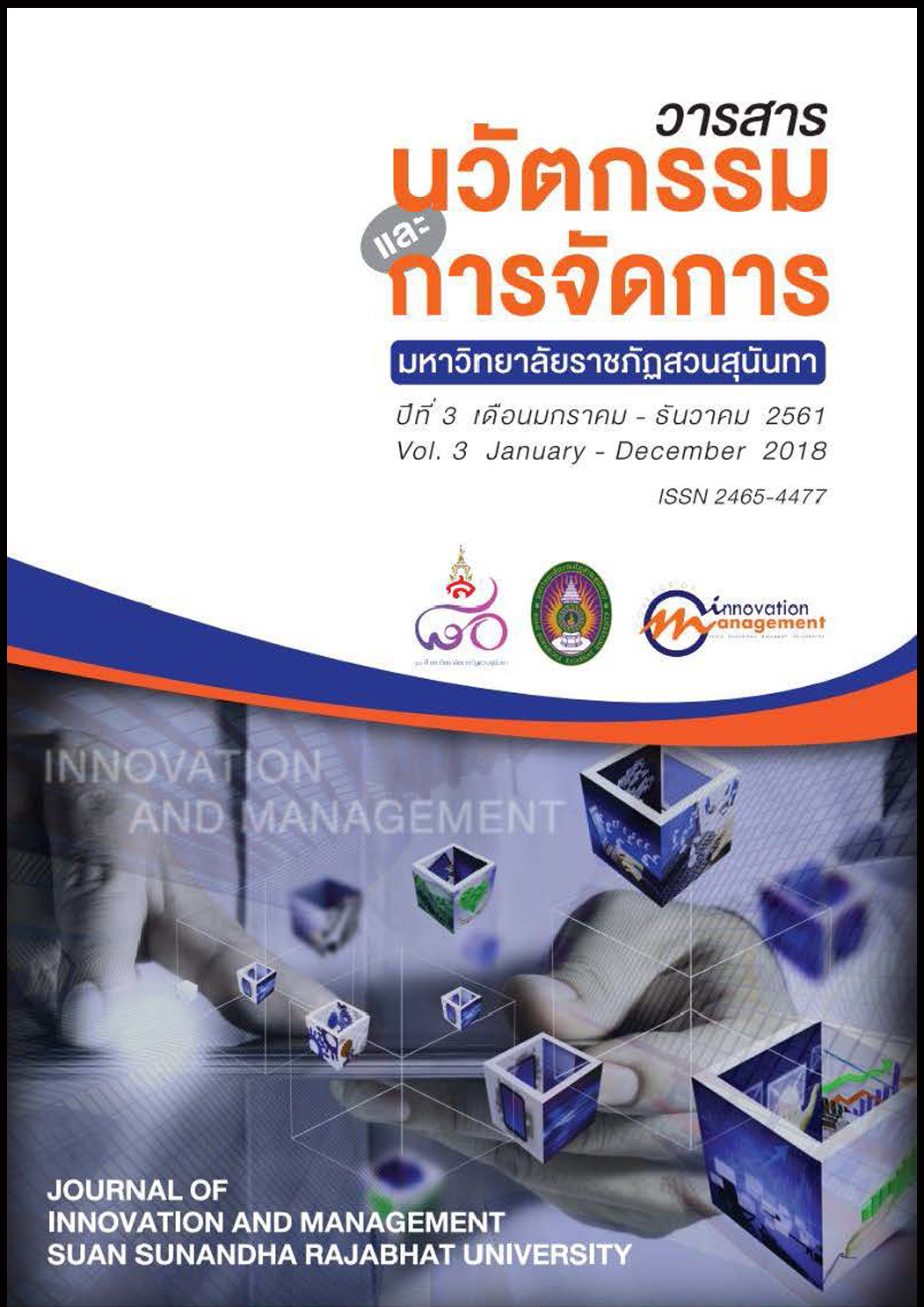Thailand's Export Direction: Past Present and Future
Keywords:
Export, DirectionAbstract
Thailand is a country with a high economic dependence on exports. However, during 2012-2014, Thailand's export value has continued to shrink from the past which has been growing at a high level. The world economy is still expanding. The study found that Thai export shrinkage was a result of both external factors and Thai unique factors. Half of the external factors are cyclical factors in global demand that have not fully recovered from the 2008 financial crisis, and the other half is a structural factor due to the changing global trade patterns. The unique factor of Thailand is its reduced competitiveness, The market share in the world market of Thailand decreased. The problem is caused by three main factors: 1) the labor problem in Thailand, quality and price. 2) Capital from foreign direct investment in manufacturing sector is likely to decline from the past. At the same time, Thai entrepreneurs tend to invest more abroad. This is a constraint in the expansion of export volume. And 3) the overall picture of the country contributing to the decline in economic growth from the past. Reflect the technological level of a country that has not developed much in the latter. In line with the level of research and development in Thailand is clearly lower than neighboring countries. However, despite the weakening of exports, other driving forces, such as domestic demand for services, such as tourism and trading nations, are still not strong enough to be the main engine for driving the economy into the export sector. Thailand needs to accelerate the reform of the export sector by selecting potential industries for export, including the petrochemical and chemical industries and the food and beverage industry.
References
2. International Monetary Fund (IMF). (2010). World Economic Outlook: Rebalancing Growth. Washington, D. C.: IMF.
3. KPMG International. (2013). The KPMG Survey of Corporate Responsibility Reporting 2013. Netherlands: KPMG International Cooperative.
4. Leamer, E.E. and Stern, R.M. (1970). Quantitative International Economics. Boston: Allen & Bacon.
5. PWC. (2014). Anticipating problems, finding solutions: Global Annual Review 2014. The network of member firms of PricewaterhouseCoopers International Limited (PWC).
6. Palley, T. (2011). The Rise and Fall of Export-Led Growth: Levy Economics Institute of Bard College Working Paper No. 675. Annandale-on-Hudson, NY: Levy Economics Institute.
7. UNCTAD. (2014). Trade and Development report 2014., Geneva: United Nations.






